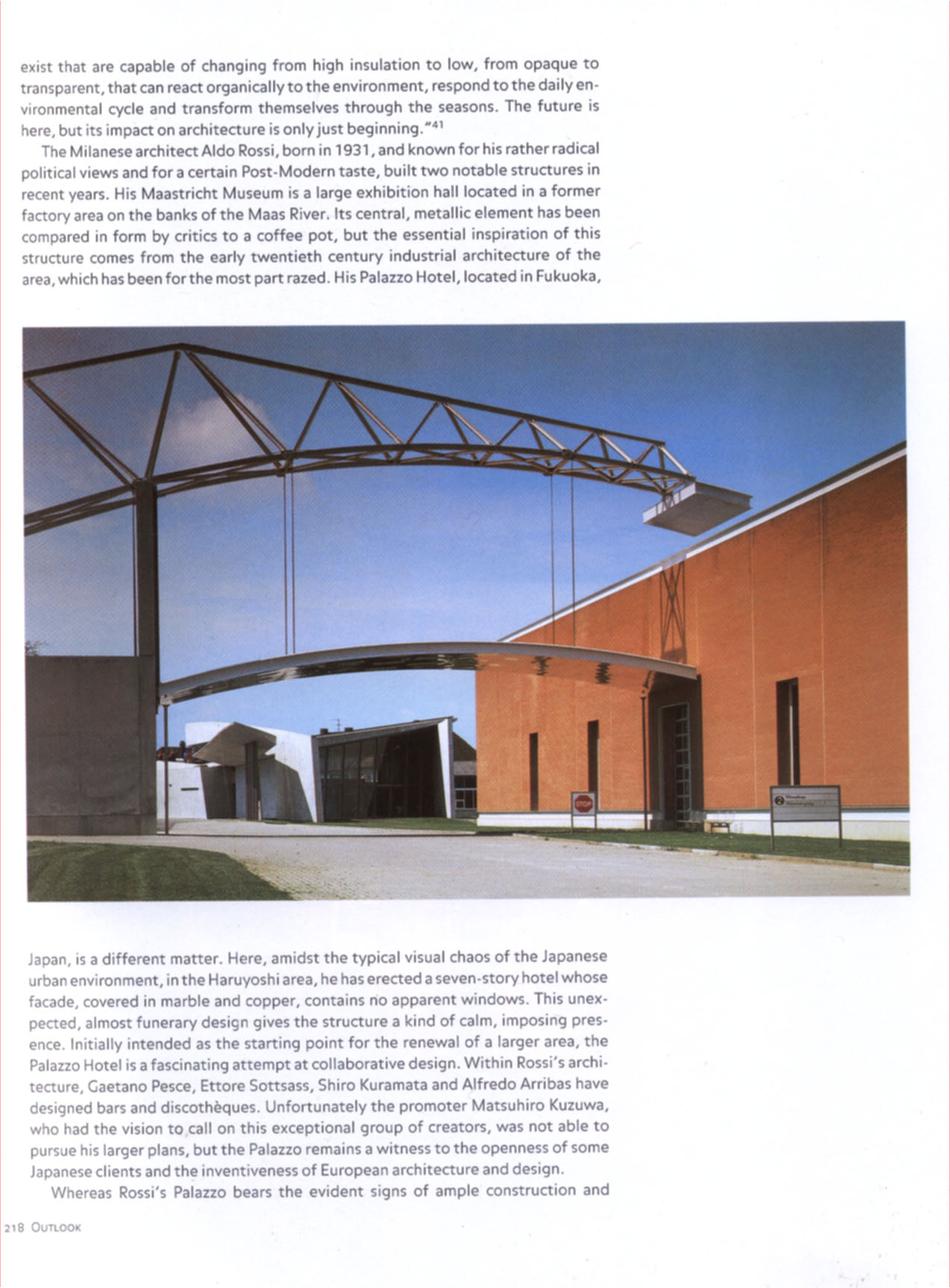19202 New Forms Taschen 206

exist that are capable of changing from high insulation to Iow, from opaque to transparent, that can react organically to the environment, respond to the daily en-vironmental cyde and transform themselves through the seasons. The futurę is here, but its impaa on architecture is only just beginning."41
The Milanese architect Aldo Rossi, born in 1931, and known for his rather radical political views and for a certain Post-Modern taste, built two notable structures in recent years. His Maastricht Museum is a large exhibition hall located in a former faaory area on the banks of the Maas River. Its central, metallic element has been compared in form by critics to a coffee pot, but the essential inspiration of this structure comes from the early twentieth century industrial architecture of the area, which has been for the most part razed. His Palazzo Hotel, located in Fukuoka,

Japan, is a different matter. Here. amidst the typical visual chaos of the Japanese urban environment, in the Haruyoshi area, he has erected a seven-story hotel whose facade, covered in marble and copper, contains no apparent Windows. This unex-pected, almost funerary design gives the structure a kind of calm, imposing pres-ence. Initially intended as the starting point for the renewal of a larger area, the Palazzo Hotel is a fascinating attempt at collaborative design. Within Rossi's architecture. Caetano Pesce, Ettore Sottsass, Shiro Kuramata and Alfredo Arribas have designed bars and discoth&ques. Unfortunately the promoter Matsuhiro Kuzuwa, who had the vision to cali on this exceptional group of creators, was not able to pursue his larger plans, but the Palazzo remains a witness to the openness of some Japanese clients and the inventiveness of European architecture and design.
Whereas Rossi's Palazzo bears the evident signs of ample construction and
218 Outlook
Wyszukiwarka
Podobne podstrony:
56746 New Forms Taschen 151 shape that an architect or an artist can imagine, so why not a vividly c
New Forms Taschen 091 Fumihiko Maki National Museum of Modern Art Kyoto. Japan, 1983-86 Fumihik
New Forms Taschen 138 Europę: Building Art A number of artists have specifically sought, through ins
14506 New Forms Taschen 035 France and the Return of Europę One of the reasons for the exceptional c
23706 New Forms Taschen 110 Christian de Portzamparc, author of one of the towers in the Euralilie c
30140 New Forms Taschen 224 ni Collea 40 volumes of TASCHEN S WORLD ARCHITECTURE in eight ycars
New Forms Taschen 025 California Dreaming Another region in which circumstances have combined to pro
New Forms Taschen 119 ern artists to touch fundamenta! elements that are still very much part of eve
więcej podobnych podstron